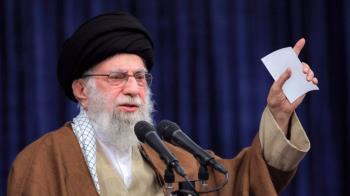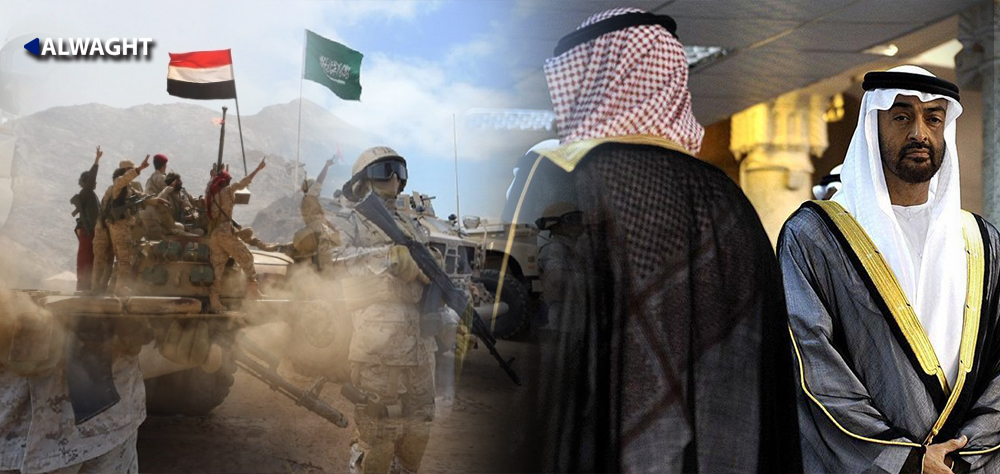Alwaght- The consecutive defeats of the Saudi-led Arab coalition in Yemen not only push the largely showy alliance to collapse but also deepen the division between two allies Saudi Arabia and the UAE and bring the two countries' proxy forces to each other's throats in this conflict.
In September 2019, the confrontation between Saudi-backed loyalists of the resigned President Abdrabbuh Mansour Hadi and the UAE-supported Southern Transitional Council (STC) led to capture of the presidential palace in Aden by the southern separatists and expulsion of the cabinet from the strategic city. The conflict escalated to a point that Saudi Arabia and the UAE pressured their allied Yemeni forces to sign a pact to settle the dispute and share power, in order to maintain the alliance and prevent a full-scale war between the two sides, resulting in the Riyadh agreement.
Contrary to Riyadh's claims, the agreement was by no means a lasting one, and despite the apparent insistence of the parties to show commitment to it, it was marred by breaches. In one of the last important cases of the failure of the Riyadh agreement, the explosion at Aden airport on the day of the arrival of the cabinet of Hadi to Aden can be mentioned. At that time, when the Saudis wanted to implement the Riyadh agreement and guarantee the return of Mansour Hadi's government by entrusting the guarding of Aden airport to Yemeni forces trained in Riyadh, the STC rose against Saudi Arabia.
Now as the Saudi agreement runs into an impasse and Ansarullah revolutionary movement tightens its control over the north and western coasts and marches centerward as it crushes the al-Qaeda terrorists and Saudi and Emirati-sponsored mercenaries, rivalry between Riyadh and Abu Dhabi and their proxies over the southern regions heats up. The Emirates since long ago has had their eyes on the Yemeni ports and geopolitically important and resource-rich southern Islands like Socotra and Hanish and Dhoghar archipelago. The war paved the way for the Emirates to pursue their expansionist plans. But from the start of the war, Saudi Arabia had focused on the northern regions to prevent Ansarullah from controlling Sana'a, the capital, and strengthening Shiite presence in the Saudi backyard. But this sharing does not make any sense presently, and the Saudis want to boost their presence in the south lest fall behind the Emiratis. This is just one reason for deepened division between the two sides.
This fissure has begun to pose a big challenge to the two their alliance and cohesion, slowly transforming into a crisis with potentials to grow to the scale of Qatar crisis. Yemen News Gate website reported, citing diplomatic resources, Kuwait has made contacts with Riyadh and Abu Dhabi to de-escalate the tensions. The news outlet continued that Saudi Arabia stipulated return of the STC to the negotiating table and implementation of the Riyadh pact unconditionally.
This comes while there is no least optimism to settlement of the crisis, especially that the Emiratis, contrary to the stated exit from Yemen war, massively continue their expansionist schemes in southern Yemen unabated. They also work to undermine the agreements due to the alliance between Hadi and the Islah Party that is affiliated with the Muslim Brotherhood, a movement banned in the UAE. Reports emanating from Socotra suggest that in recent days, the UAE began to issue special identity cards to the residents of the island and interacts with people by these cards.
"These cards can be used as an identity card when traveling to the UAE and its holders are given some privileges," the report said, adding that Khalifa bin Zayed Al Nahyan Foundation, a humanitarian platform, issues these cards. Socotra is the second major and traditional stronghold of Islah Party and its supporters after Ma'rib. The southerners, backed by the UAE, are pushing to seize the island, as they find its control a long step towards independence of the south.
Here are the possible consequences of this Saudi-Emirati division.
1. Collapse of Riyadh agreement and intensification of fight between Hadi loyalists and the STC militants.
2. Boost of Ansarullah patriotic approach for expulsion of the foreign forces to save Yemen's territorial integrity .
3. Impairment of anti-Ansarullah camp and boost of Ansarullah battleground position
4. Shrink of Hadi legitimacy and acceptance in the negotiations.
Alwaght- The consecutive defeats of the Saudi-led Arab coalition in Yemen not only push the largely showy alliance to collapse but also deepen the division between two allies Saudi Arabia and the UAE and bring the two countries' proxy forces to each other's throats in this conflict.
In September 2019, the confrontation between Saudi-backed loyalists of the resigned President Abdrabbuh Mansour Hadi and the UAE-supported Southern Transitional Council (STC) led to capture of the presidential palace in Aden by the southern separatists and expulsion of the cabinet from the strategic city. The conflict escalated to a point that Saudi Arabia and the UAE pressured their allied Yemeni forces to sign a pact to settle the dispute and share power, in order to maintain the alliance and prevent a full-scale war between the two sides, resulting in the Riyadh agreement.
Contrary to Riyadh's claims, the agreement was by no means a lasting one, and despite the apparent insistence of the parties to show commitment to it, it was marred by breaches. In one of the last important cases of the failure of the Riyadh agreement, the explosion at Aden airport on the day of the arrival of the cabinet of Hadi to Aden can be mentioned. At that time, when the Saudis wanted to implement the Riyadh agreement and guarantee the return of Mansour Hadi's government by entrusting the guarding of Aden airport to Yemeni forces trained in Riyadh, the STC rose against Saudi Arabia.
Now as the Saudi agreement runs into an impasse and Ansarullah revolutionary movement tightens its control over the north and western coasts and marches centerward as it crushes the al-Qaeda terrorists and Saudi and Emirati-sponsored mercenaries, rivalry between Riyadh and Abu Dhabi and their proxies over the southern regions heats up. The Emirates since long ago has had their eyes on the Yemeni ports and geopolitically important and resource-rich southern Islands like Socotra and Hanish and Dhoghar archipelago. The war paved the way for the Emirates to pursue their expansionist plans. But from the start of the war, Saudi Arabia had focused on the northern regions to prevent Ansarullah from controlling Sana'a, the capital, and strengthening Shiite presence in the Saudi backyard. But this sharing does not make any sense presently, and the Saudis want to boost their presence in the south lest fall behind the Emiratis. This is just one reason for deepened division between the two sides.
This fissure has begun to pose a big challenge to the two their alliance and cohesion, slowly transforming into a crisis with potentials to grow to the scale of Qatar crisis. Yemen News Gate website reported, citing diplomatic resources, Kuwait has made contacts with Riyadh and Abu Dhabi to de-escalate the tensions. The news outlet continued that Saudi Arabia stipulated return of the STC to the negotiating table and implementation of the Riyadh pact unconditionally.
This comes while there is no least optimism to settlement of the crisis, especially that the Emiratis, contrary to the stated exit from Yemen war, massively continue their expansionist schemes in southern Yemen unabated. They also work to undermine the agreements due to the alliance between Hadi and the Islah Party that is affiliated with the Muslim Brotherhood, a movement banned in the UAE. Reports emanating from Socotra suggest that in recent days, the UAE began to issue special identity cards to the residents of the island and interacts with people by these cards.
"These cards can be used as an identity card when traveling to the UAE and its holders are given some privileges," the report said, adding that Khalifa bin Zayed Al Nahyan Foundation, a humanitarian platform, issues these cards. Socotra is the second major and traditional stronghold of Islah Party and its supporters after Ma'rib. The southerners, backed by the UAE, are pushing to seize the island, as they find its control a long step towards independence of the south.
Here are the possible consequences of this Saudi-Emirati division.
1. Collapse of Riyadh agreement and intensification of fight between Hadi loyalists and the STC militants.
2. Boost of Ansarullah patriotic approach for expulsion of the foreign forces to save Yemen's territorial integrity .
3. Impairment of anti-Ansarullah camp and boost of Ansarullah battleground position
4. Shrink of Hadi legitimacy and acceptance in the negotiations.



























